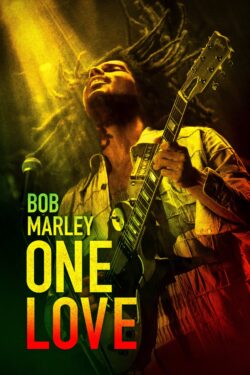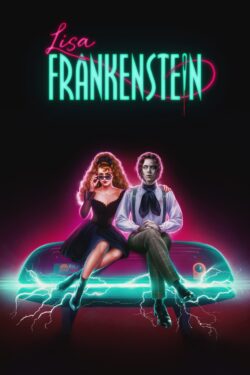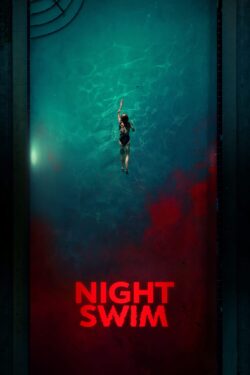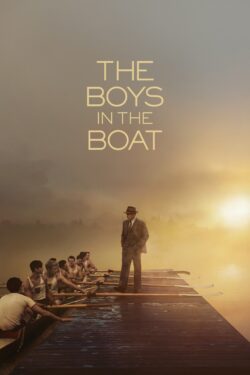The Mustang (2019)
Animal Action
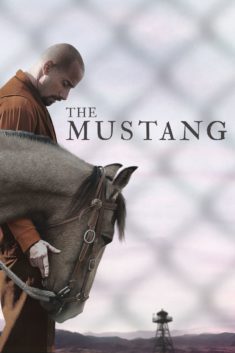
All horseback riders were stunt riders or experienced actors who were skilled at riding, mounting and dismounting. All running/galloping scenes were well choreographed, and actors used caution while on and near animals. The horse(s) rearing was a trained behavior. The horses were specially trained “falling horses” and “lay down horses” that fell on cue onto a soft landing area. Whenever horses were seen tied to posts/fences, they were attached to lead ropes tied to posts.
All tack on horses were fitted by wranglers. Horses were tied in place by wranglers or the leads were held by them while brushing or petting the horses. Horses were basically handled in real life maintenance activities which the horses were all accustomed to, including fitting of tack, brushing and petting or standing to have the hoofs picked out of dirt. The actors were primarily horsemen and accustomed to this sort of work.
The opening shot of wranglers rounding up wild horses in the desert was taken from documentary footage. No animals were harmed in the filming of that footage.
When we see the horses being loaded into a large horse trailer, alhtough production took no actions to intervene or manipulate what these agents chose to do in their capacity as employees of Nevada DOC, American Humane was there to oversee the filming. Still, the facilities on set were constructed by production of horse-safe livestock panels which did added safety to the procedure. When we see the horses run down a hill, with the helicopter hovering over them, we checked the area for debris. Everything was safe. The helicopter was a safe enough distance from the horses.
When we see the horses inside the corral, everything was checked beforehand. The horses were provided with shade and water. The trailer was also safe. The set was constructed of horse-safe livestock with plywood for extra safety and with deep sand footing. In the subsequent scene where we see about twenty horses in a large pen, circling from one end to the other, several wranglers were off-camera overseeing the action. The scene was achieved by the five wranglers walking around in the arena pen
with the horses. The horses basically moved away from wherever the wranglers positioned themselves. To move the horses the wranglers merely walked as a line towards the herd.
In the scene where the lead actor approaches the horse in the enclosed trailer, wherever the actor walks, the horse turns his hind end towards the actor. The horse also nods his head, paws the ground and backs away from the actor. This action was all cued visually by the trainer using a long whip in each hand waving them or lifting them in various patterns to cue different actions.
In the scene where the horse is led into the pen and runs in circles and one of the prisoners ropes him, the roping was not dangerous since the horse stood still and was not moving in a forward purposeful way. Additionally, the ropes had breakaway hondas as an extra precaution so the rope would separate from the horse if pulled too hard. The trainer was just outside the pen monitoring here and prepared to stop action if he thought the roping would frighten the horse. Whenever the horse reared, the trainer cued this action using a stick that he put in the air.
In the scene when the actor walks into the pen for the first time, yelling at the horse to back off, the entire set was constructed of horse-safe livestock panels with no sharp edges or protrusions. The round pen is further protected on the inside with plywood panels. The actors in costume working the horse were trainers in costume. The horse was a trick liberty horse that could be cued visually from a distance. Initially the horse was placed in the pen by the trainers. The trainer used his body position to have the horse move around the pen. He did this by facing the horse or walking towards its shoulder pointing a PVC cueing stick. The horse responded by circling at a trot and lope based on previous round pen training.
In the scene where the actor rides the horse and falls off, a stunt rider got on the horse, rode him in a few circles, lifts his feet in the air before falling off. Action was achieved merely by that rider’s cues.
When the actor gets knocked down by the horse, and retaliates by punching the horse, this was all done with pantomime The horse trainer and stunt double rehearsed this scene extensively before shooting the scene. On action, as the horse lopes around the perimeter, the stunt double stepped in front of the horse and was knocked down. The stunt double made little or no actual contact with the horse other than touching the passing horse on the chest before falling away. Horse actions were cued by trainer in the pen. When we see the actor attack the horse with his fists, the stunt double acted like he was punching the horse sporadically, but the punches didn’t land. The horse appeared calm and in fact just followed the trainer around the pen spontaneously with no sign of fear or agitation. There was also tight footage of the actor swinging with the PVC pole or hitting out violently with his fists as though striking the horse. No horse was involved in this shot. The actor merely pretended the horse was in front of him.
In the scene where clouds of dust come into the pens, and the prisoners led the horses into the prison kitchen, the set outside was an asphalt driveway with several large metal manhole covers. These were covered with thick rubber mats to prevent horses from
slipping. All the prisoners leading the horses were trainers in costume. Fans were placed on the set. NO dust was blown into the set. Fake blood was applied to some of the horses fur. The sequence was rehearsed frequently before shooting.
In the same scene where the prisoners bring the horses into the kitchen, the set was an actual kitchen. Fixtures projecting from walls, if possible, were removed from set. Any free standing objects such as shelves and racks were removed. Only sinks and prep tables remained. They all had rounded corners. The floor was strewn with crushed vegetables and dried horse manure and some walls were decorated with fake blood. Trainers were either dressed like prisoners or off-camera overseeing everything.
In the scene where the prisoners lie horses on the ground in the pen, with vets tending to them, they were lying in an area of deep sand. Makeup used was primarily on bandages, but was water soluble, non-toxic, skin safe products. Lying horses were trained and practiced at this skill and were allowed up at frequent intervals. The syringe and needle used were a prop with a blunt retractable tube instead of a needle. The trainers lied horses down at marks in deep soft sand. Generally one wrangler had a knee over each horse’s neck, but verbal command and stoking of the horse’s neck was the cue to stay lying down. Horses were allowed to stand up between cuts.
In the scene when the main actor is finally able to get on the horse and run in circles in the pen, the action was achieved by stunt coordinator. In the same scene, when the actor falls off the horse, stuntman performed a basic horse fall. The horse was conditioned for this action.
In the sequence where we see a team of prisoners on horseback in the desert, the set was at least five hundred acres of salt flat in the desert. The area was a sandy crusted surface with good traction but soft enough for horses to leave shallow prints. The area was extremely even and level with no rocks, obstacles, gullies etc. Most of the riders were trainers. The three actors in the scene were not skilled riders but had received some instruction and practice from wranglers so that they could safely handle a horse. The camera car NEVER follow directly behind the line of horses, but was allowed to drive ahead of or to the side of the line of horses at a reasonable controllable distance.
In the scene where the prisoners enter the arena on horseback in front of the audience, trainers were off-camera making sure all horses hit their marks.
In the scene where the actor opens the gate and the horse runs out, this scene was rehearsed several times. The actor and the horse were well acquainted at this point. A trainer stood off-camera and cued the horse to run to him.

